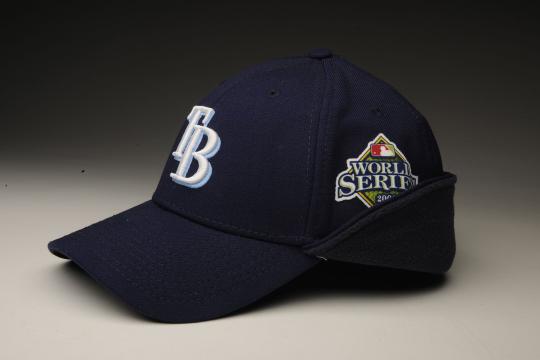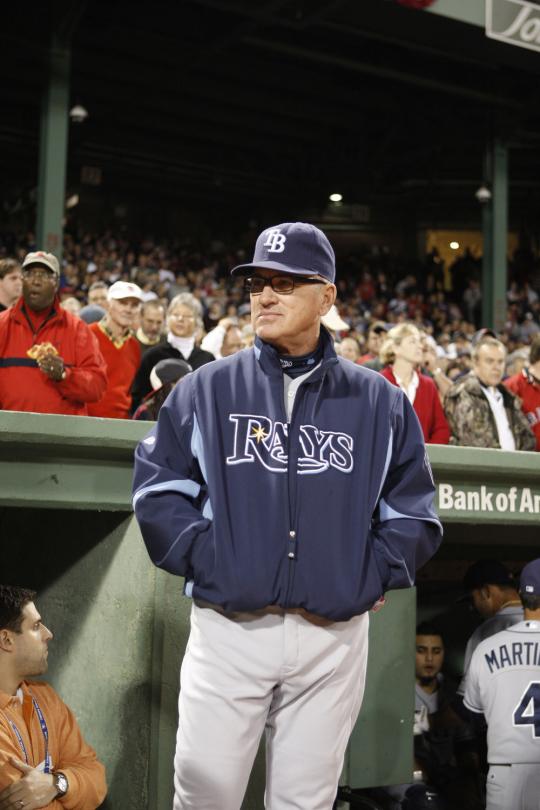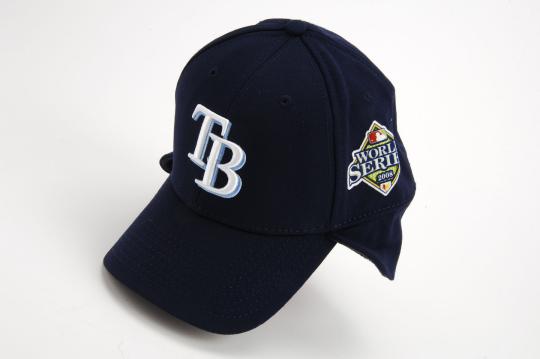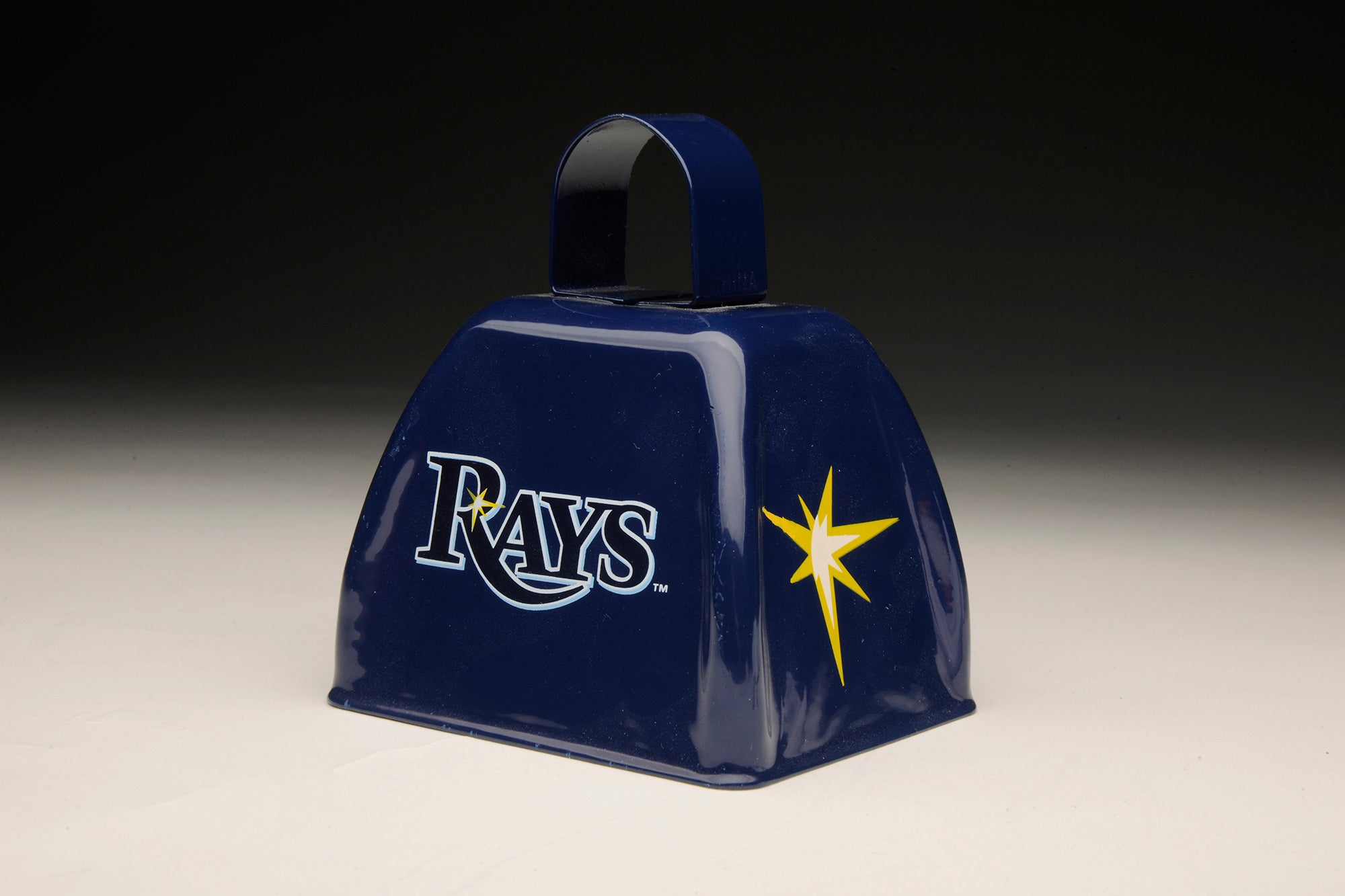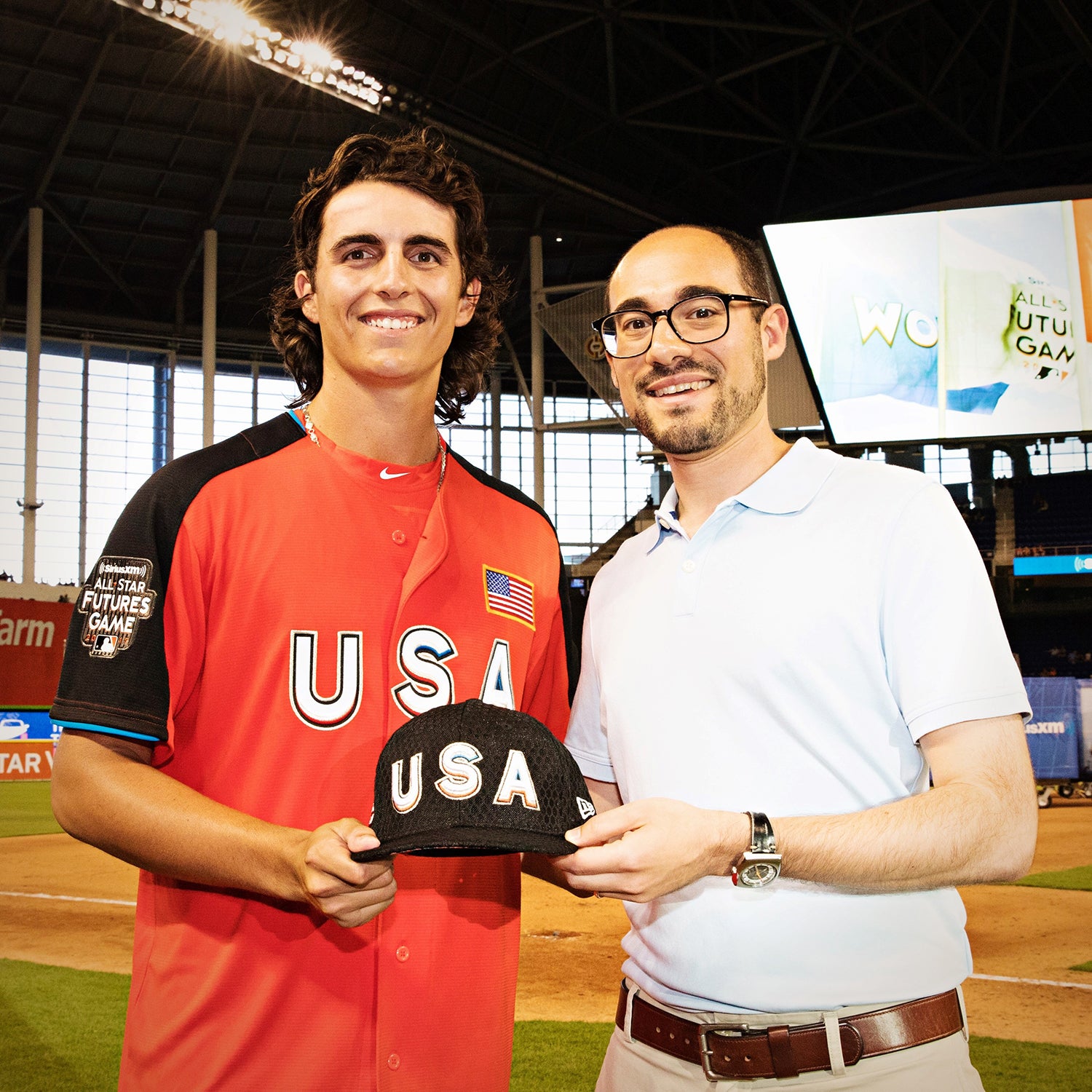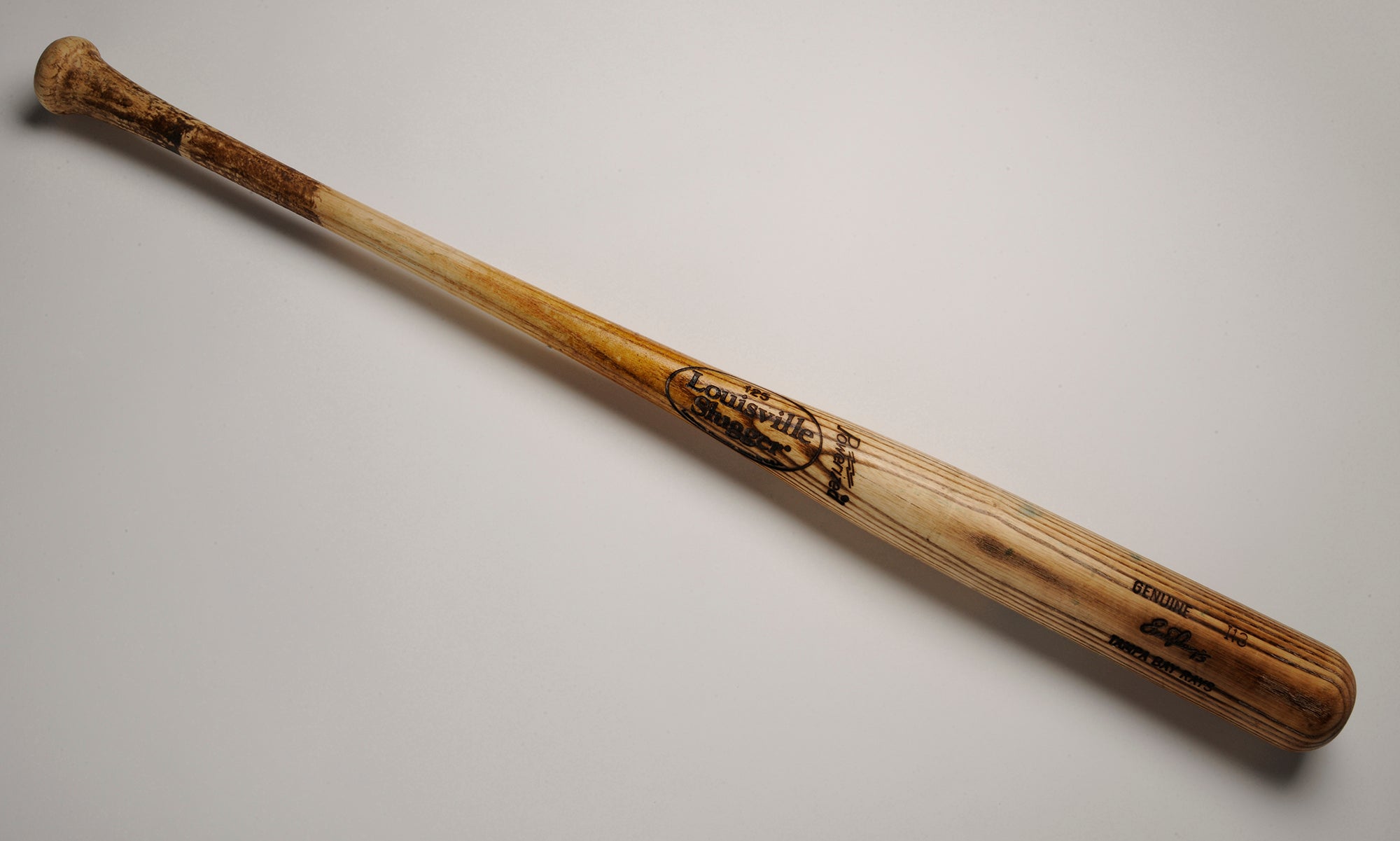- Home
- Our Stories
- #Shortstops: Flap cap
#Shortstops: Flap cap
It’s not unusual for games to be delayed, postponed or rescheduled in the early days of a baseball season, when the spring weather is fickle and brings snow, hail, rain and/or sunshine in a matter of hours.
Fortunately for baseball fans, the whims of the weather typically spare the World Series. Rain has, on occasion, forced a delay of game, but it had before never wreaked havoc like it did on Oct. 27, 2008.
Hall of Fame Membership
There is no simpler, and more essential, way to demonstrate your support than to sign on as a Museum Member.
The American League had won the All-Star Game that July, so the Tampa Bay Rays, making their World Series debut, had home field advantage over the Philadelphia Phillies, who were competing for their second franchise title and the city’s first championship in a quarter century. This brought Games 1 and 2 of the World Series to Tampa, Fla., and Tropicana Field.
The Trop, as it’s been nicknamed, features a Teflon-coated fiberglass roof at a six-and-a-half degree angle. This helps to protect the field from the region’s frequent rainfall, and aids in the temperature control of the ballpark: No matter the weather outside, it’s always 72 degrees under the dome.
Despite those year-round temps at home, Rays’ clubhouse manager Chris Westmoreland knew his team needed to be prepared for less-than-inviting conditions. During Spring Training that season, New Era offered the Rays a new ear-flap cap model: A basic hat, with a two-inch strip of fleece attached to the outer edge that can be flipped up or down to cover the wearer’s ears. The New York Times reported that New Era “first experimented with the hats at the end of [2007], and that this was the first year they were readily available.”
Westmoreland first issued them during the American League Division Series against the White Sox in Chicago, and the Rays took to calling them “the Elmer Fudds,” after the famous Looney Tunes character with a similarly-styled chapeau. The caps took on a life of their own, though, during a World Series that would be long-remembered because of the weather.
The first two Fall Classic contests went off without a hitch in Florida, with the Phillies taking Game 1 by a 3-2 score and the Rays victorious in Game 2. Then both teams headed north, to Citizens Bank Park.
The hometown team took Games 3 and 4 in chilly, overcast temperatures, with gusts of wind cutting through the open air ballpark. It was during that fourth contest that Rays manager Joe Maddon first donned one of the “Elmer Fudds,” and others followed his lead as Game 5 dawned on Monday, Oct. 27, with 16 mph winds and an increasingly ominous drizzle.
Conditions at the field swiftly took a turn for the worse, with puddles visibly pooling in the infield dirt.
“I don’t think I’ve ever, to this day, been involved in a Major League Baseball game at any point in any place where the conditions were less satisfactory than what they were in that game,” Rays right fielder Rocco Baldelli told the Philadelphia Inquirer.
“It was one of the coldest times in my career,” recalled Shane Victorino, the Phillies’ center fielder. “I think it was the bottom of the fifth. It was the coldest. I remember being in the outfield and I didn’t have sleeves on that night and I was like, ‘Man, it’s miserable.’ I looked at my arms and it was starting to, like, freeze on my arms.”
Eventually, for the first time in World Series history, the game was suspended until Wednesday night, due to worsening weather patterns. Play resumed on Oct. 29, with the Phillies batting in the bottom of the sixth. Philadelphia took the lead that inning, Baldelli tied it with a solo shot in the seventh, but a Pedro Feliz single gave the Phillies what would prove to be the winning run.
Among the artifacts in the Museum’s collection from this Fall Classic is the ear-flap cap worn by Maddon, which helps to tell the story of the memorable Game 5 experience.
The physical benefits of the ear-flap cap were not to be denied, but public opinion on their style, or lack thereof, was mixed. Some called for the fashion police, while others deemed it a “hip new look.”
Through it all, Maddon remained unflappable.
“You know what, that doesn’t bother me at all,” Maddon said, when told of the naysayers. “I’m flattered to be compared to Elmer Fudd. He’s an iconic figure.”
Isabelle Minasian was the digital content specialist at the National Baseball Hall of Fame and Museum

